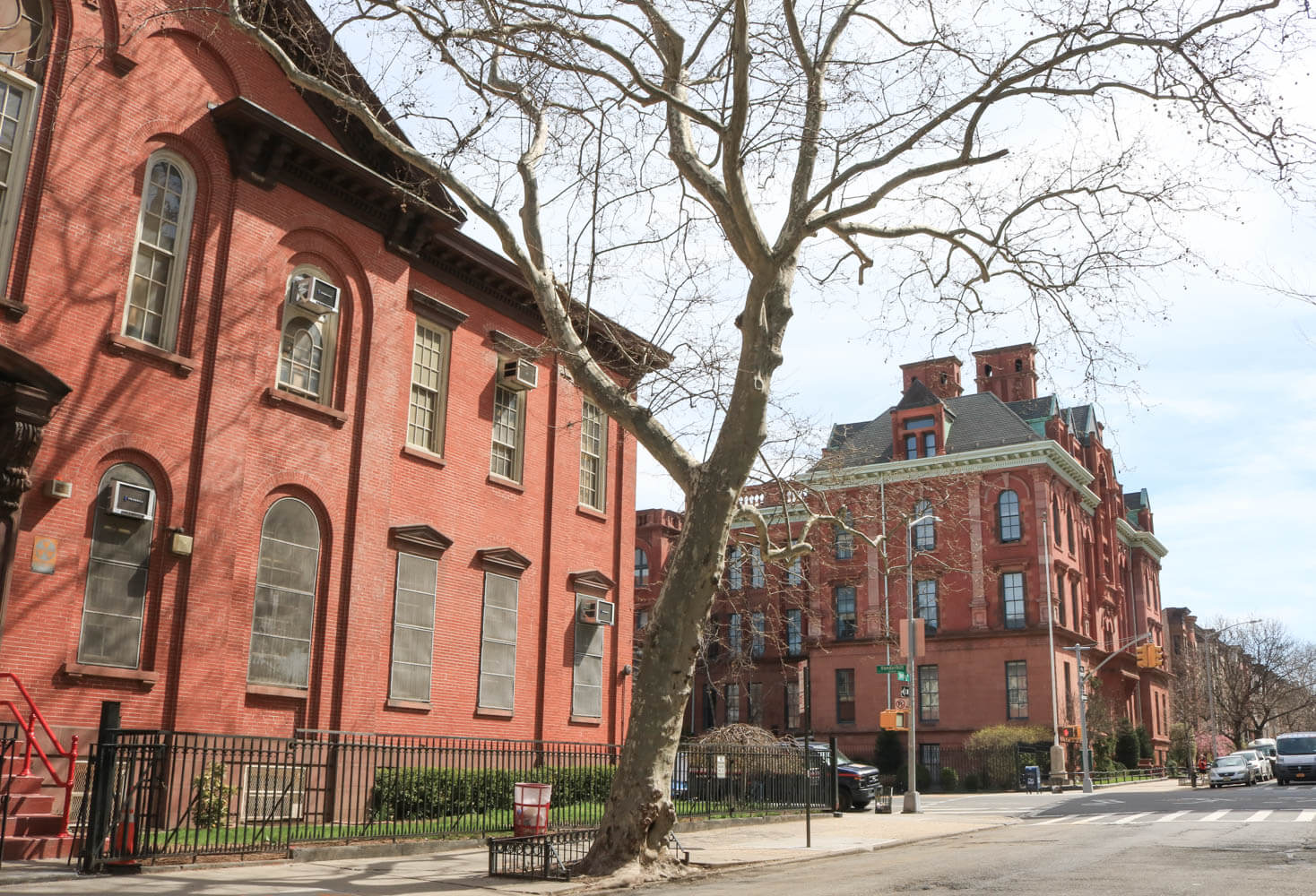A Modest Monument to Education: P.S. 111 in Prospect Heights
Just a block from Prospect Park is an early example of one of Brooklyn’s great red brick Victorian school buildings.

Photo by Susan De Vries
Editors note: This post originally ran in 2012 and has been updated. You can read the previous post here.
Just a block from Grand Army Plaza and Prospect Park is an early example of one of Brooklyn’s great red brick Victorian school buildings. Public School 111 at 249 Sterling Place in Prospect Heights, originally built as Public School 9 in 1868, got a jump on Romanesque Revival with its arched windows and also has some Italianate elements more typical of its period.
In 1867, when construction on the school began, the area was still sparsely settled land. Flatbush Avenue was the main thoroughfare, and houses were beginning to be built on the side streets, but it wasn’t until the first part of Prospect Park opened in 1867 that the neighborhood began to be noticed.

The city had acquired most of what is now Prospect Heights through eminent domain, intending to build Prospect Park on it, but when plans changed, the land was sold back to private holders for development.

As the brownstone blocks between Flatbush and Vanderbilt were being developed, and as construction of Prospect Park continued, the city fathers thought proactively, and built a grammar school for the new community. When the doors of P.S. 9 opened in 1868, the children were greeted by Mrs. Jane Dunkley, the first principal, and one of the first women to be in charge of a large Brooklyn grammar school.

The building was designed by Samuel J. Leonard, who was superintendent of the Department of Building for the Board of Education of the City of Brooklyn. He held that post for more than 20 years, serving from 1857 to 1879. During that time, he designed and supervised the construction and repair of school buildings.

Many of his designs for schools employ a very early Romanesque Revival style of building, called the “round arch” or Rundbogenstil style, popular in Germany at this time. This building is not full-blown Rundbogenstil, as it still has very strong elements of the Italianate style to it, most especially in the acanthus leaf brackets on the front door, as well as the hooded window caps.

Leonard liked the elegance the round arch style gave his buildings, and it allowed him to design lots of tall windows, an essential element in any school.

In 1879, Irish-born, Cooper Union educated architect, James Naughton took over as Superintendent of Building. He held the post until 1898, when the City of Brooklyn’s Board of Ed was taken over by the New York City Board of Education. Leonard was a decent architect, and designed some nice schools, but Naughton became a superstar. He began with simple things, like adding the wings to this growing school in 1887.

He would show his real talent in buildings like Girls High School, the first high school in Brooklyn, and later his masterpiece, Boys High School, both in Bedford Stuyvesant. When P.S. 9 grew too small for even his additions, Naughton designed the P.S. 9 Annex, right across the street at 251 Sterling Place, to handle the overflow. It, too, is an amazing, gorgeous school building, resplendent in brick and terra–cotta. That was built in 1895 and converted to residential use in the late 1980s.

The care taken in the design of both schools shows the City of Brooklyn’s commitment to public education. Grammar school was extremely important, as for many students this would be the only formal education they would receive. High school was not an option for many students, and as an educational concept was just catching on in the 1870s. Over the years, the original P.S. 9 has changed names, changed functions, and been modernized on the inside, but remains part of Brooklyn’s educational system. Both buildings are individual landmarks.
[Photos by Susan De Vries unless noted otherwise]
Related Stories
- Peek Inside a Converted Schoolhouse With a Storied Past in Prospect Heights
- Walkabout: A Guide to James W. Naughton, Master of Brooklyn School Architecture
- Building of the Day: 251 Sterling Place
Email tips@brownstoner.com with further comments, questions or tips. Follow Brownstoner on Twitter and Instagram, and like us on Facebook.









What's Your Take? Leave a Comment